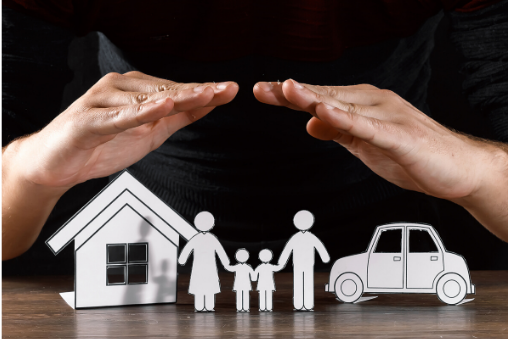
SHARE
READ & LEAVE A COMMENT

Becoming a first-time homeowner is an important and exciting milestone in your life, but the experience can often be overshadowed by looming questions, worry or confusion over how to best protect your new asset. If you’re planning on getting a mortgage, you will be required to purchase home insurance for your new home prior to moving in. You’ll be tasked with making the choice for how to protect your belongings and your new home. This will protect the lender in the event something happens to your home while you’re still paying off the mortgage. If you aren’t planning on getting a mortgage, home insurance isn’t a requirement in any state but you’ll still want to be able to insure your investment!
We’re here to help take the guesswork out of home insurance: what it is, what it covers, and who to get it from. So first off, what is home insurance? And why do you need it? Homeowners’ insurance can also be called home insurance. It’s put in place to provide financial protection to the owner of the home in the event the house or its contents are damaged. Home insurance covers you for fire, smoke damage, hurricanes, hail, lightning strikes, as well as vandalism, theft, water damage that originates in your home (such as a pipe bursting due to freezing), and liability for accidental injuries that may happen to others on your property (such as a friend slipping on your icy step). However, there are additional coverages you can purchase.
So how do you determine what you need for your home insurance? First and foremost, you need to determine the coverages you need. This can be determined by asking yourself:
All of these questions will help you to figure out what coverages need to be included in your policy, so you can best protect yourself and your home. Make sure you talk to someone about the details of what will be covered and what you would have to pay out of pocket if something were to happen. It’s also important to understand how you will pay. With home insurance, you typically have two ways to pay. The first, is through escrow. Escrow is normally part of your monthly mortgage payment. If you choose to pay your home insurance via escrow, your lender will pay your home insurance once a year and then you’ll make payments per month into escrow (which is similar to a bank account). If you don’t pay via escrow, you’ll be able to pay either monthly or in full via your bank account.
Next, you want to find the best price. If you’re working with a mortgage provider, they will alert you when it’s time to start shopping. If you aren’t working with a mortgage provider, you may be able to start shopping as soon as you have an idea of what house you want. The easiest way to save money on your home insurance is by bundling with your auto insurance. Bundling means to purchase your home and auto insurance through the same insurance provider. It would be in your best interest to research insurers to see who can offer you the best priced bundle. Look for companies who don’t spend a lot of money on advertising, as this will be reflected in higher premiums. Online insurers often have the ability to more quickly and easily bundle your home and auto insurance, which simplifies the process and saves you not only money, but also time.
Protecting your home doesn’t need to be difficult, but it is important to do it right: do your research, determine your coverages and find the best price. And, most importantly, enjoy your new home!
About Kim Klenk
Kim started her career as a Marketing Analyst before joining the Quicken Loans Family of Companies. Most recently, Kim was part of the team that started Rocket Loans where she was the VP of Marketing and led the Business Intelligence team. Kim graduated with a bachelor’s degree in Mathematics from Wittenberg University and an Applied Statistics Certificate from Texas A&M. Follow Kim also on LinkedIn and Twitter.
SHARE
READ & LEAVE A COMMENT